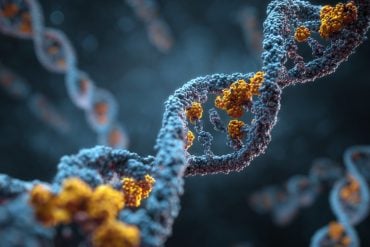Summary: Combing gait data from multiple sclerosis patients with machine learning, researchers have developed a new tool to monitor and predict disease progression.
Source: University of Illinois
Monitoring the progression of multiple sclerosis-related gait issues can be challenging in adults over 50 years old, requiring a clinician to differentiate between problems related to MS and other age-related issues.
To address this problem, researchers are integrating gait data and machine learning to advance the tools used to monitor and predict disease progression.
A new study of this approach led by University of Illinois Urbana Champaign graduate student Rachneet Kaur, kinesiology and community health professor Manuel Hernandez and industrial and enterprise engineering and mathematics professor Richard Sowers is published in the journal Institute of Electrical and Electronics Engineers Transactions on Biomedical Engineering.
Multiple sclerosis can present itself in many ways in the approximately 2 million people that it affects globally, and walking problems are a common symptom. About half of the patients need walking assistance within 15 years of onset, the study reports.
“We wanted to get a sense of the interactions between aging and concurrent MS disease-related changes, and whether we can also differentiate between the two in older adults with MS,” Hernandez said.
“Machine-learning techniques seem to work particularly well at spotting complex hidden changes in performance. We hypothesized that these analysis techniques might also be useful in predicting sudden gait changes in persons with MS.”

Using an instrumented treadmill, the team collected gait data – normalized for body size and demographics – from 20 adults with MS and 20 age-, weight-, height- and gender-matched older adults without MS.
The participants walked at a comfortable pace for up to 75 seconds while specialized software captured gait events, corresponding ground reaction forces and center-of-pressure positions during each walk. The team extracted each participant’s characteristic spatial, temporal and kinetic features in their strides to examine variations in gait during each trial.
Changes in various gait features, including a data feature called the butterfly diagram, helped the team detect differences in gait patterns between participants. The diagram gains its name from the butterfly-shaped curve created from the repeated center-of-pressure trajectory for multiple continuous strides during a subject’s walk and is associated with critical neurological functions, the study reports.
“We study the effectiveness of a gait dynamics-based machine-learning framework to classify strides of older persons with MS from healthy controls to generalize across different walking tasks and over new subjects,” Kaur said. “This proposed methodology is an advancement toward developing an assessment marker for medical professionals to predict older people with MS who are likely to have a worsening of symptoms in the near term.”
Future studies can provide more thorough examinations to manage the study’s small cohort size, Sowers said.
“Biomechanical systems, such as walking, are poorly modeled systems, making it difficult to spot problems in a clinical setting,” Sowers said. “In this study, we are trying to extract conclusions from data sets that include many measurements of each individual, but a small number of individuals. The results of this study make significant headway in the area of clinical machine learning-based disease-prediction strategies.”
About this machine learning and MS research news
Source: University of Illinois
Contact: Lois Yoksoulian – University of Illinois
Image: The image is in the public domain
Original Research: Closed access.
“Predicting Multiple Sclerosis from Gait Dynamics Using an Instrumented Treadmill – A Machine Learning Approach” by Rachneet Kaur et al. IEEE Transactions on Biomedical Engineering
Abstract
Predicting Multiple Sclerosis from Gait Dynamics Using an Instrumented Treadmill – A Machine Learning Approach
Multiple Sclerosis (MS) is one of the most common neurological conditions worldwide whose prevalence is now greatest among people 50-60 years of age. While clinical presentations of MS are highly heterogeneous, mobility limitations is one of the most frequent symptoms.
The aims of this study were to examine MS and disability related changes in spatiotemporal and kinetic gait features after normalization; and evaluate the effectiveness of a gait data-based machine learning (ML) framework for MS prediction (GML4MS).
Methods: In this study, gait data during self-paced walking on an instrumented treadmill from 20 persons with MS and 20 age, weight, height and gender-matched healthy older adults (HOA) were obtained. We explored two normalization strategies, namely size-N (standard body size-based normalization) and regress-N (regression-based normalization using scaling factors derived by regressing gait features on multiple subject demographics) to minimize the dependency of derived gait features on the subject demographics; and proposed GML4MS, a ML based methodology to classify individual strides of older persons with MS (PwMS) from healthy controls, so as to generalize across different walking tasks and subjects after gait normalization.
Results: We observed that regress-N improved the accuracy of identifying pathological gait using ML when compared to size-N. When generalizing from comfortable walking to walking while talking, gradient boosting machine achieved the optimal subject classification accuracy and AUC of 94.3% and 1.0, respectively and for subject generalization, a multilayer perceptron resulted in the best accuracy and AUC of 80% and 0.86, respectively, both with regress-N normalized data.
Conclusion: The integration of gait data and ML to predict MS may provide a viable patient-centric approach to aid clinicians in disease monitoring and relapse treatment. This work is the first attempt to employ and demonstrate the potential of ML for this domain.






